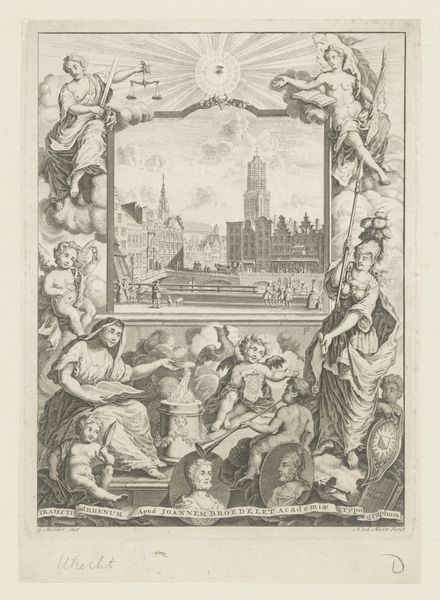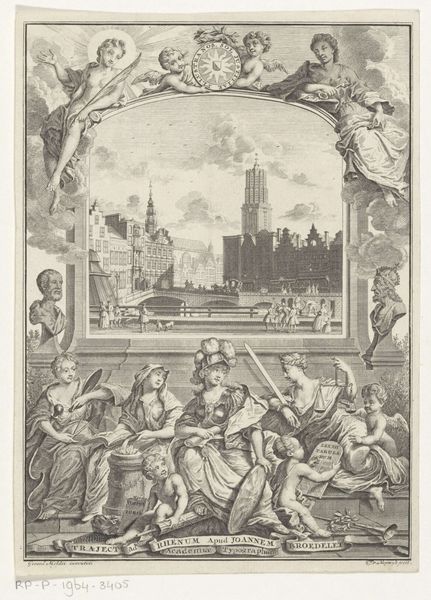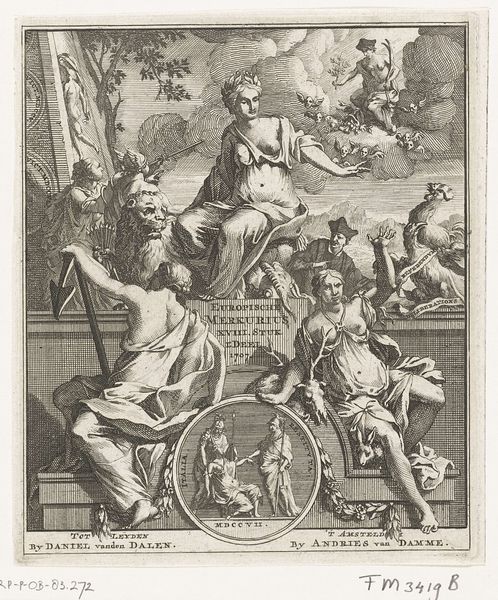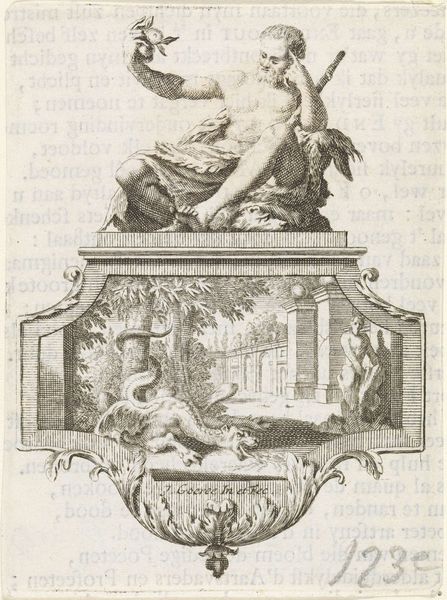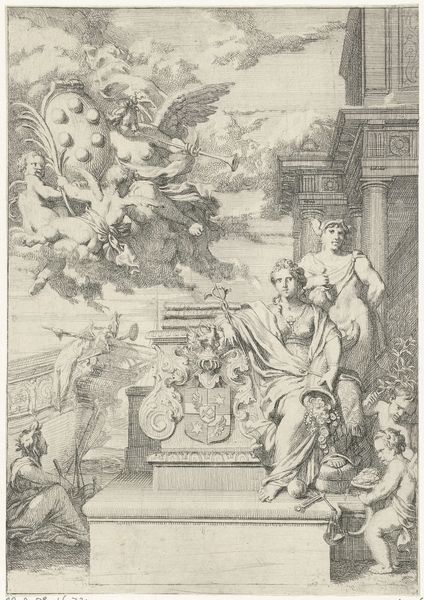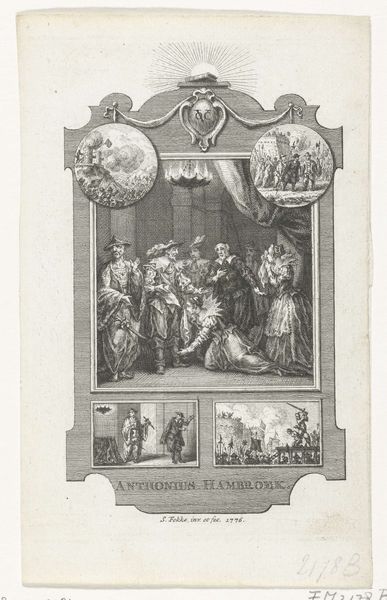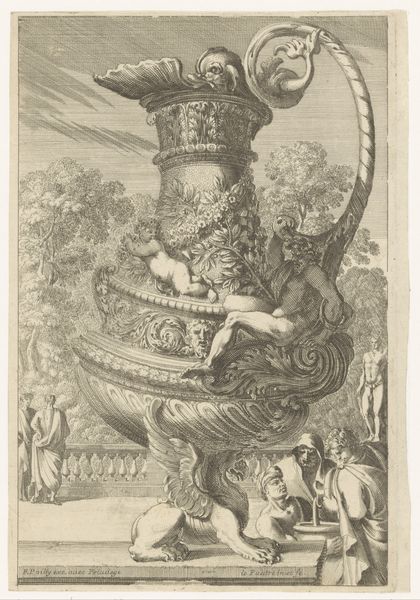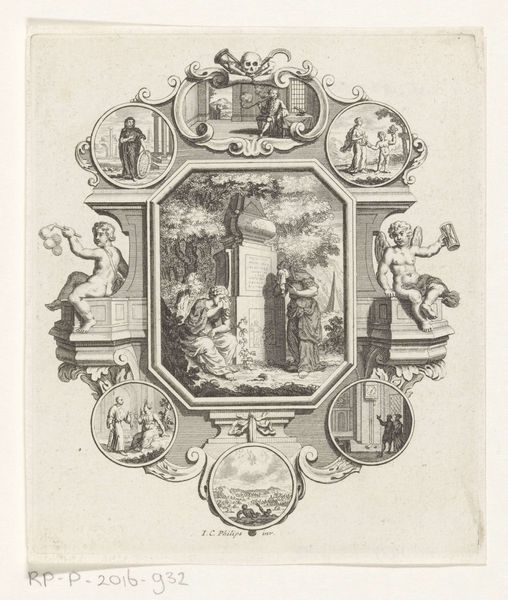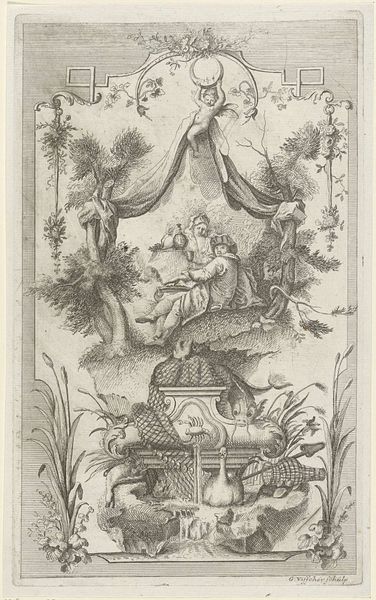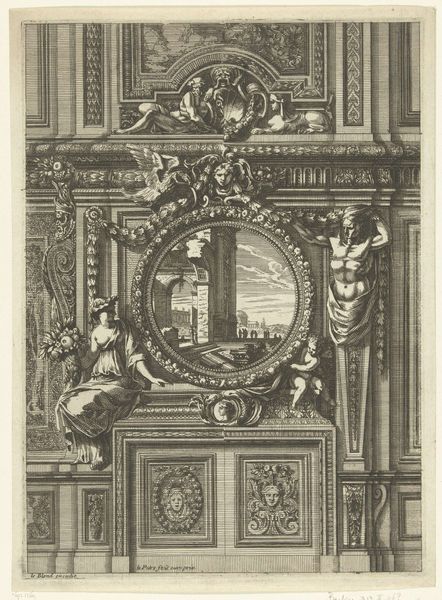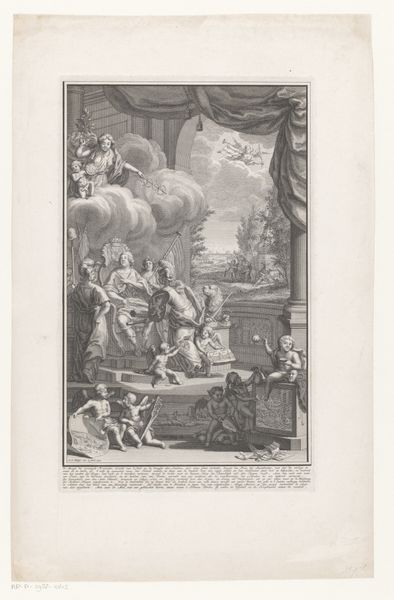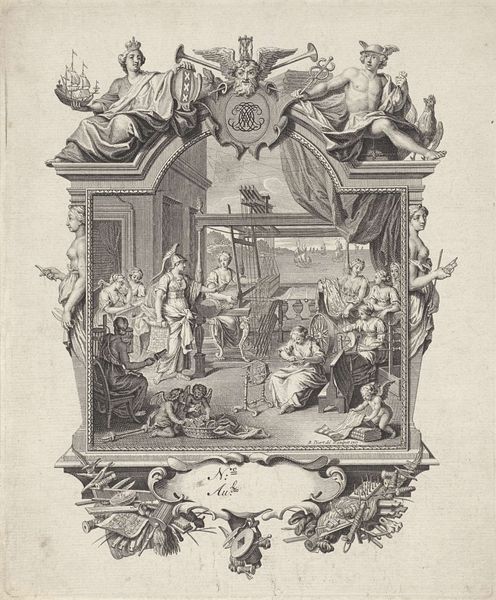
print, engraving
#
allegory
#
narrative-art
#
baroque
#
pen drawing
# print
#
figuration
#
vanitas
#
line
#
history-painting
#
engraving
#
miniature
Dimensions: width 90 mm, height 106 mm
Copyright: Rijks Museum: Open Domain
Jan Goeree created this emblem of a ruin, sometime between 1685 and 1731, using etching and engraving techniques. The composition draws your eye into a circular frame, bisected by a horizontal beam, where we find allegorical figures symbolizing time and mortality. Goeree masterfully employs line and form to construct a scene that is both visually appealing and rich in symbolic meaning. The ruin itself, set against a backdrop of billowing clouds, represents the transience of human achievements. Above, cherubic figures contrast with the stern image of Father Time, who is leaning on the frame with a scythe and a vacant gaze. Below, a female figure holding a book gazes upwards in contemplation. The allegorical figures remind us that even the mightiest structures and ideas will inevitably succumb to decay. Through this detailed interplay of form and allegory, Goeree invites us to meditate on the cyclical nature of existence, and the structures we build.
Comments
No comments
Be the first to comment and join the conversation on the ultimate creative platform.
